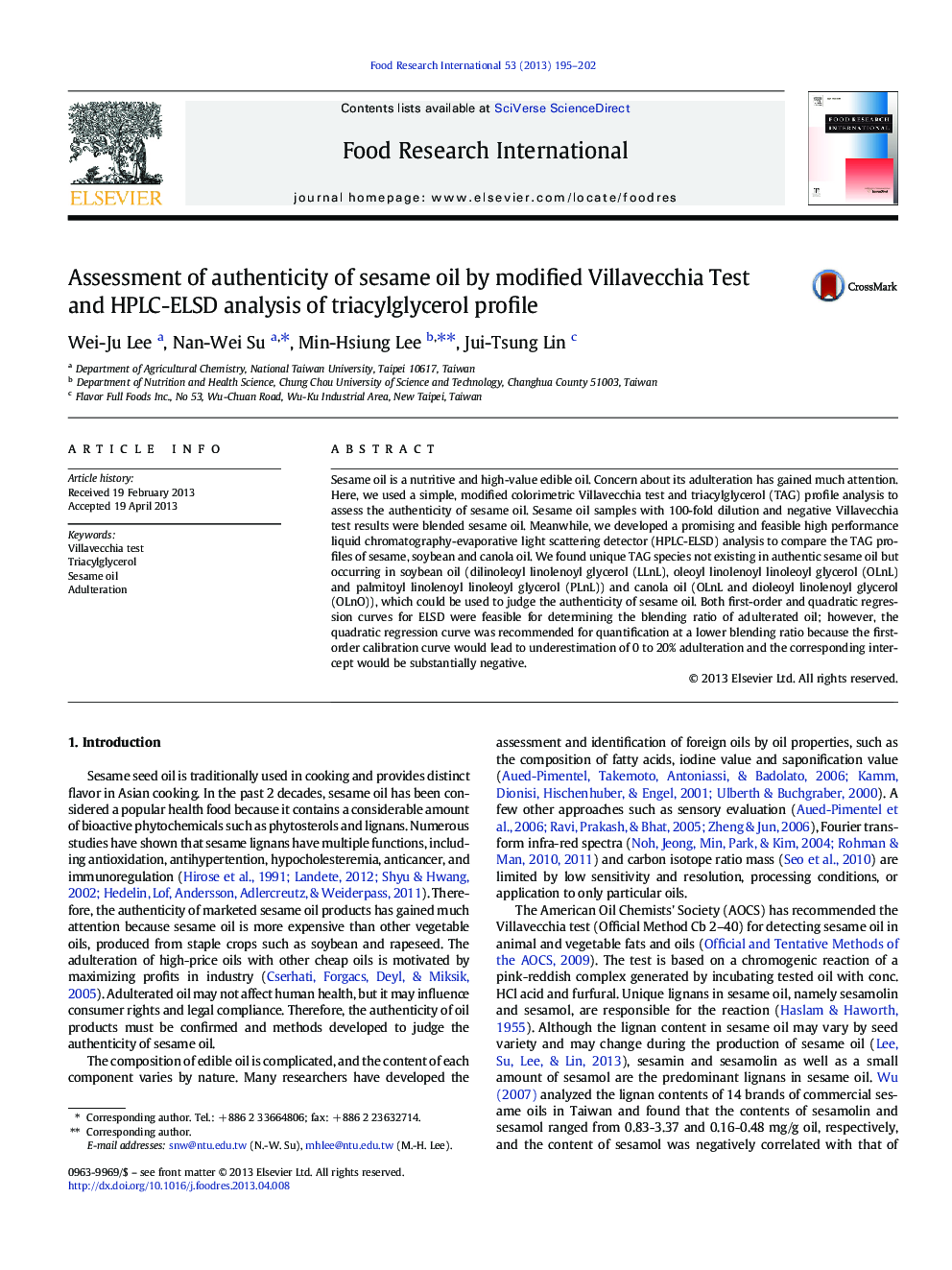| کد مقاله | کد نشریه | سال انتشار | مقاله انگلیسی | نسخه تمام متن |
|---|---|---|---|---|
| 6397714 | 1330677 | 2013 | 8 صفحه PDF | دانلود رایگان |

- A simple, modified colorimetric Villavecchia test was used to assess the authenticity of sesame oil.
- Sesame oil samples with 100-fold dilution and negative Villavecchia test results were blended sesame oil.
- Modified Villavecchia test is not feasible to detect refined sesame oil.
- TAG profile analyzed by HPLC-ELSD could be used to judge the adulteration of sesame oil blended with soybean and canola oil.
- The quadratic regression curve for ELSD was recommended for quantification of blending ratio.
Sesame oil is a nutritive and high-value edible oil. Concern about its adulteration has gained much attention. Here, we used a simple, modified colorimetric Villavecchia test and triacylglycerol (TAG) profile analysis to assess the authenticity of sesame oil. Sesame oil samples with 100-fold dilution and negative Villavecchia test results were blended sesame oil. Meanwhile, we developed a promising and feasible high performance liquid chromatography-evaporative light scattering detector (HPLC-ELSD) analysis to compare the TAG profiles of sesame, soybean and canola oil. We found unique TAG species not existing in authentic sesame oil but occurring in soybean oil (dilinoleoyl linolenoyl glycerol (LLnL), oleoyl linolenoyl linoleoyl glycerol (OLnL) and palmitoyl linolenoyl linoleoyl glycerol (PLnL)) and canola oil (OLnL and dioleoyl linolenoyl glycerol (OLnO)), which could be used to judge the authenticity of sesame oil. Both first-order and quadratic regression curves for ELSD were feasible for determining the blending ratio of adulterated oil; however, the quadratic regression curve was recommended for quantification at a lower blending ratio because the first-order calibration curve would lead to underestimation of 0 to 20% adulteration and the corresponding intercept would be substantially negative.
Journal: Food Research International - Volume 53, Issue 1, August 2013, Pages 195-202